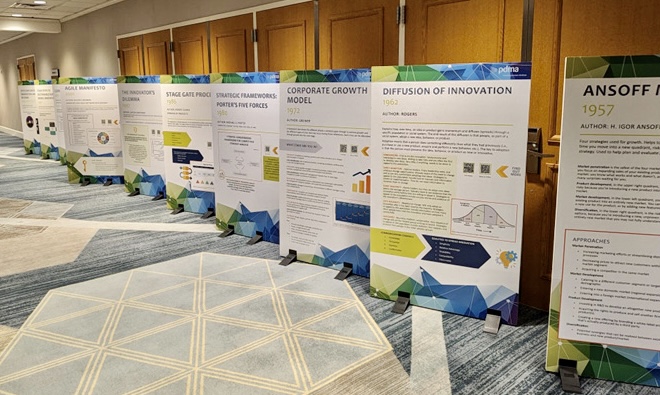Solutions
Grow Your Business Through New Product Innovation
Stage-Gate International has been helping companies successfully grow through innovation for 30+ years—and we know what works – we continually learn through research, test through experiments and adapt with clients. If you are obsessed with launching profitable products, faster with fewer points of friction, or are taking on a mission to craft a new product & technology innovation strategy, implement a process to optimize portfolios, or to digitize innovation management with certified software, we have a solution that can be tailored to your needs.
When you work with Stage-Gate International, you can expect to get programs, products and services that tie back to your specific organizational goals.
We approach every client challenge with a keen eye on what is going to deliver the best results given your unique circumstances. Strategic and transformational performance results are achieved with tailored programs , while a specific product or service might be the right fit if a quick start or accelerated timeline is needed. Whatever you may need, our team will work with you to develop solutions to ensure you hit your goals.
Stage-Gate International has helped thousands of businesses worldwide improve performance, increase profitability and grow. Whether you’re a startup trying to enter a new market or have sustained performance for decades, our team has the knowledge, experience and formula for success that can unleash your fullest innovation potential.
Innovation Is All We Do
Stage-Gate International is not a typical consultancy of generalists and bench strength. Innovation has been our singular focus for the past three decades. The result is a breadth and depth of knowledge in innovation management that is unrivaled. Our clients are innovators and so they appreciate that we put our expertise and experience to work to develop highly flexible frameworks, methodologies, products and services that can be applied to nearly any innovation challenge. Our work has helped our clients worldwide save time implementing innovation management frameworks so they can make money launching successful new products:
- Accelerate growth and performance goals
- Break down complexity and cut through confusion
- Develop practical solutions you can work with – , not just provide recommendations
- Focus on peer reviewed science of innovation management instead of what’s popular or gut feeling
We’ve built a playbook to enable client success over the years – it includes hundreds of real prototypes of the practical implementations of best practices – and it saves you and your teams time and money. We use this body of knowledge to accelerate the development of the best goal-attaining solutions for our clients.
We also have a tremendous worldwide user community that has been using our solutions, advancing them and sharing their results with us. In short, our solutions are continuously tested on a global level—providing one of the most rigorous testing environments for innovation.
Based on this global community feedback, we continually refine our approach to building solutions for our clients. That makes us a uniquely powerful partner for modernizing your innovation management framework for high impact results. Will you join our community?








